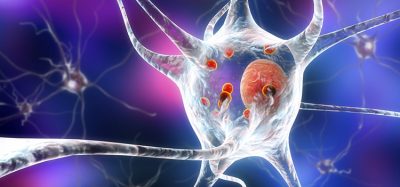Pre-clinical models of endometriosis and their value for translational research
Posted: 8 March 2022 | Ria Kakkad (Drug Target Review) | No comments yet
In this exclusive Q&A, Dr Paulina Nunez-Badinez, Scientific Researcher at Bayer AG, discusses pre-clinical research of pain related to endometriosis and why there is a lack of research around this area.


In an exclusive interview for International Women’s Day 2022 and Endometriosis Awareness Month with Drug Target Review’s Ria Kakkad, Dr Paulina Nunez-Badinez, Scientific Researcher at Bayer AG discusses her pre-clinical research of pain related to endometriosis (ENDO) and why there is a lack of understanding and awareness around this long-term condition.
ENDO is only one women’s health condition among several others that require urgently more general awareness and research funding”
ENDO is a disease where endometrial-type tissue attaches to and develop lesions in regions of the body outside of the uterine cavity, generally within the lower abdominal region. In normal, disease-free conditions, this type of tissue is only found inside the uterus and can shed during menstruation. In ENDO patients, both endometrial tissue inside the uterus as well as in the lesions will shed; in most patients, this process causes both inflammation and debilitating pain that may be represented as abnormally painful menstrual cramps as well as non-menstrual cramps, heavy menstrual bleeding, painful intercourse, and infertility. These pain-associated symptoms are often so strong that they can even disrupt day-to-day life.
Why has therapeutic development for ENDO been so slow?
I think this is rather a general problem in translational research for many indications, including ENDO, and several factors play a role, including limited disease understanding and limited translatability of the available animal models.
A second factor influencing the slow development of new therapies to treat ENDO has to do with how representative the current pre-clinical models are for ENDO, or in other words, their translational validity. This is an aspect we wanted to analyse in detail in our research article, especially regarding the external validity. Briefly, there are three types of external validity that evaluate to what extent a pre-clinical model represents a disease: construct validity (resemblance of disease mechanisms), face validity (resemblance of symptoms) and predictive validity (resemblance of outcomes upon treatment). For our review we were able to analyse both construct and face validities of the pre-clinical models used in ENDO research.Regarding limited research understanding: we know that a physiological phenomenon called “retrograde (backwards) menstruation” is very likely the reason why this extra-uterine endometrial tissue reaches other internal areas in the body and we also know why these lesions can cause pain. We still do not know exactly why some women develop the disease and others not, although retrograde menstruation occurs in about 90 percent of women during her reproductive life. Therefore, more basic research is needed to understand which are the pathological mechanisms that occur in ENDO patients leading to lesion establishment and progression. This may sound like a very straightforward/simple idea, but it is not an easy task, because in ENDO patients, there is an average diagnostic delay of seven years from disease onset. That means, once a physician diagnoses ENDO in a patient, it is very likely that the disease mechanisms that led to lesion establishment already took place long ago.
There are other socioeconomic factors that make the situation difficult, particularly in ENDO. On one hand, only few pharmaceutical companies are still investing in women’s health. On the other hand, payors (at least in Europe) are not prepared to pay prices for this non-life-threatening disease affecting women.
From your research of pre-clinical models of ENDO, what were your most interesting findings?
Overall, in the last 20 years of research on ENDO, four pre-clinical model types have been largely used. We carefully analysed the methodologies to induce the models in each of these publications and found that syngeneic tissue in-transplantation, particularly the variant that uses intraperitoneal injection for tissue delivery, was the methodology that resembled retrograde menstruation the closest (in other words, the model variant with highest construct validity for ENDO). One advantage of this model type is that it allows for further refinements such as hormonal supplementation in donor animals for generating endometrial tissue or menses, for example.
It was shocking to realise that despite pain being one of the most distressful symptoms in ENDO patients, this endpoint has been largely understudied in pre-clinical models”
The second very interesting finding was in relation to the face validity of the models. It was shocking to realise that despite pain being one of the most distressful symptoms in ENDO patients, this endpoint has been largely understudied in pre-clinical models. In this regard, there is another important aspect to mention: pain research has also evolved during the last years and it has been acknowledged that the so-called “evoked pain” measures (in other terms, tests where the experimenter applies a certain stimulus and observe how the animal reacts to it) may have some drawbacks, inducing a degree of stress on the animals, representing hypersensitivity and not necessarily chronic pain and increased risk of bias. Then, other methods to measure pain in animal models that are “observer-independent” have been proposed as more relevant to evaluate in models where pain is sustained in time. The number of articles using these methods for pain evaluation were close to zero.
Did you find existing pre-clinical studies to be relevant for translational research?
Based on the results of our publication we could summarise that from all studies published, those involving the use of syngeneic tissue in-transplantation and evaluation of pain endpoints, especially non-evoked pain measures, are the ones that have the highest construct and face validity for translational research.
In the study, it is stated that there is not much research around ENDO and pain. What is the cause for the lack of research around this area?
Most of the basic research in ENDO is still trying to solve questions related with disease understanding and is not necessarily bound to the evaluation of a putative treatment for development of a new therapy. Also, if a research group has already characterised and published the pain behaviour in a particular model, there may be no need to re-evaluate this endpoint in a next experimental setting – this will largely depend on their research question. Obviously, for translational research further characterisation of pain-related symptomatology should be a must. Other reasons may be sociological, such as little research funding for a non-life-threatening disease affecting women. Therefore, increased awareness of the disease to the general society and decision makers is strongly needed.
What would you recommend for future pre-clinical studies on ENDO?
I think it is important to first acknowledge all the efforts invested by pre-clinical researchers in the field to generate new knowledge and understand ENDO better. Without them we would not be able to stand where we are. Second, I would like to bring collective attention to the already available good research practice guidelines in pre-clinical research, like the ARRIVE guidelines or the EQiPD Toolbox, the latter providing a complete overview on how to improve quality in pre-clinical research. These recommendations are wide open and not directed only to academic researchers, but also to industry and small- and medium-size enterprises (SMEs), such as contract research organisations (CROs).
Now that we have identified what is missing, I think the direction to go would be to harmonise pre-clinical and clinical research in ENDO, including a special focus on what can we do to continue improving the construct and face validity of pre-clinical models for translational research. This is not a one person’s job, so I would like to encourage multidisciplinary and multi-site research collaborations to deepen the understanding on disease mechanisms in patients and bring the lessons learned to pre-clinical researchers to improve their models, what is called back-translation.
I am very proud to be part of the IMI-PainCare consortium, which is the biggest research collaboration on pelvic pain research in Europe.
Why do you think it is important to focus research on issues that affect women’s health?
We are about 50 percent of the world’s population, but research funding focused on women’s health is nowadays still underfunded, which is very disappointing. It is simply not right to know that about 190 million women worldwide have ENDO and are being subjected to debilitating pain and detrimental consequences in their life quality and there is still no cure. Furthermore, ENDO is only one women’s health condition among several others that require urgently more general awareness and research funding.
I truly hope that along with the sustainable development goals proposed by the World Health Organization (WHO), specifically “good health and wellbeing” and “gender equality”, this issue gets soon properly addressed.


Related topics
Disease Research, Drug Development, Research & Development, Therapeutics, Translational Science
Related conditions
endometriosis
Related organisations
Bayer, IMI-PainCare consortium
Related people
Dr Paulina Nunez-Badinez








